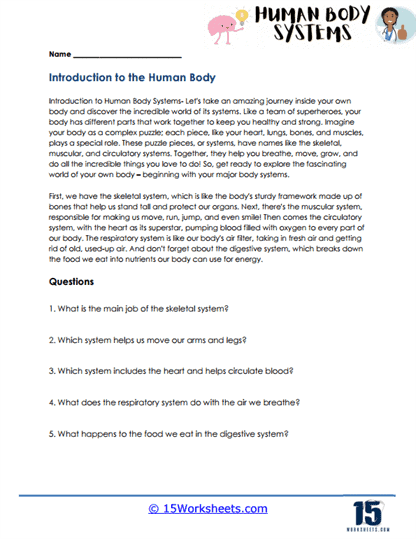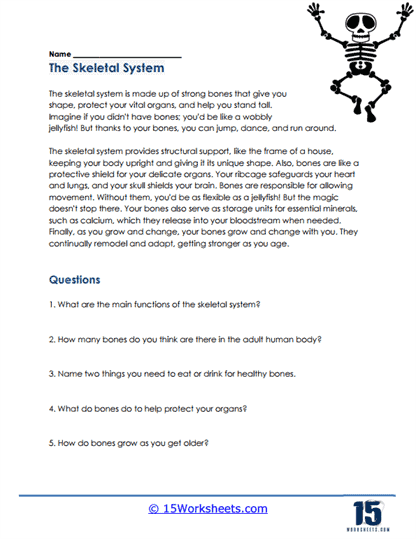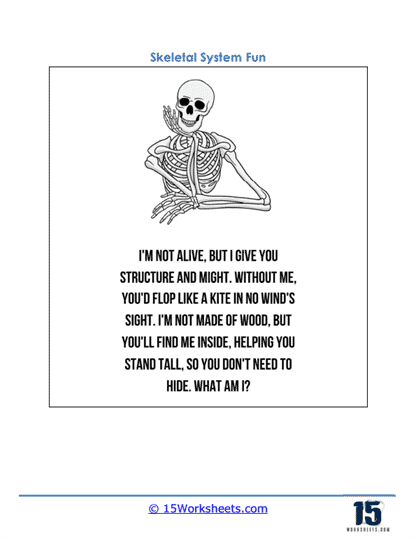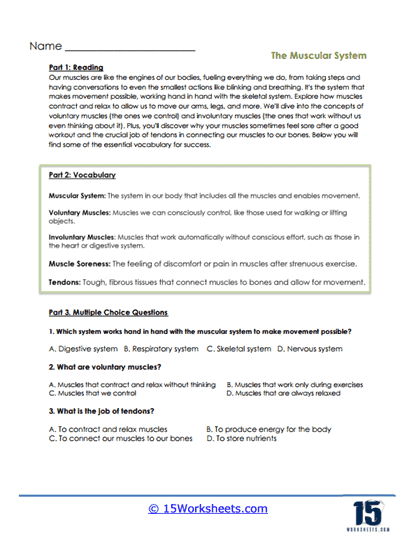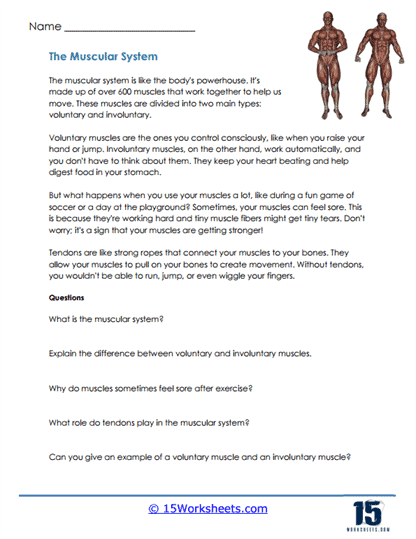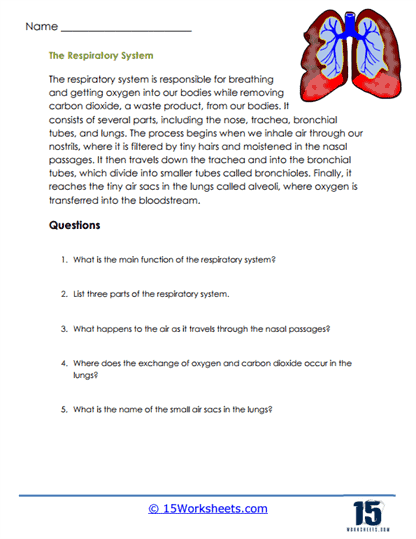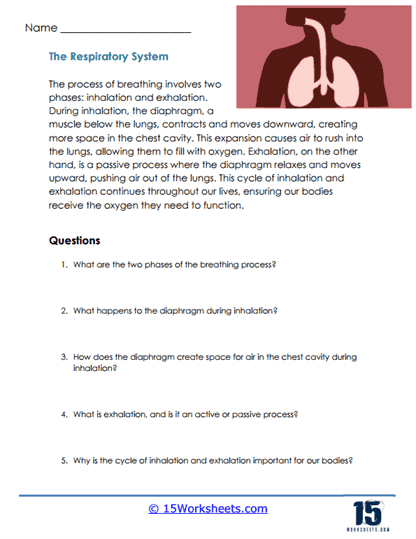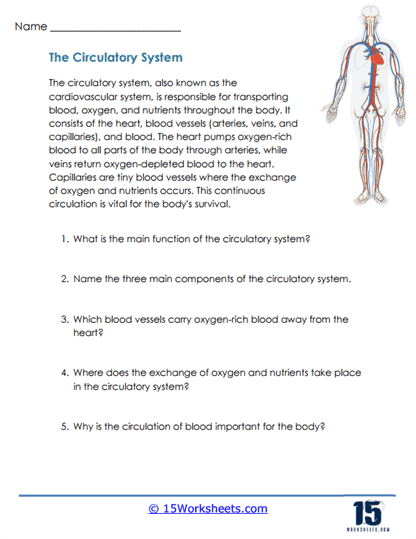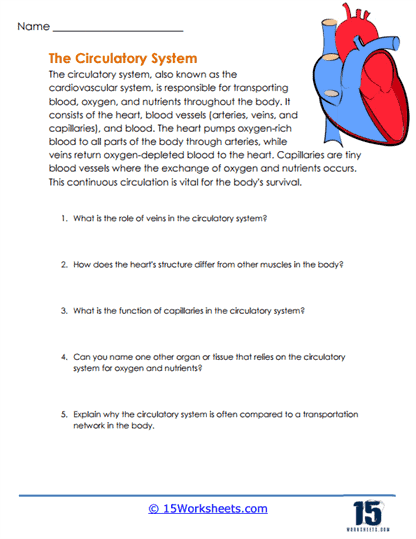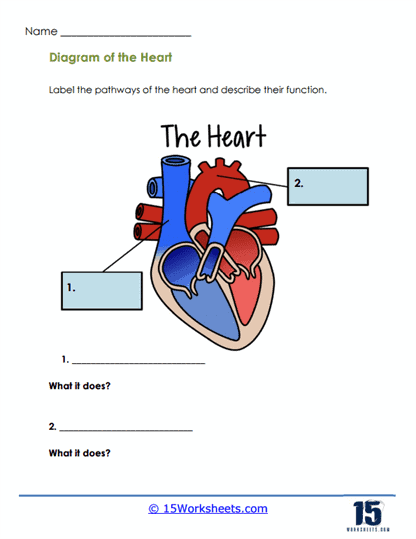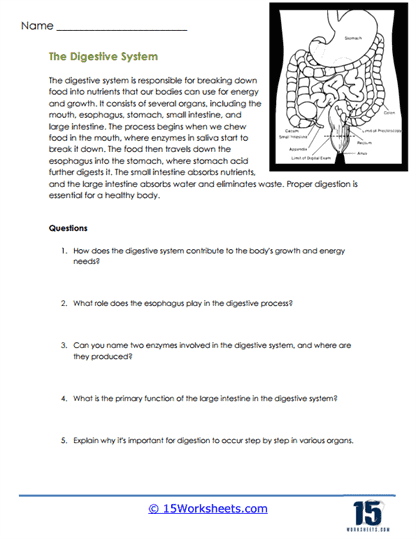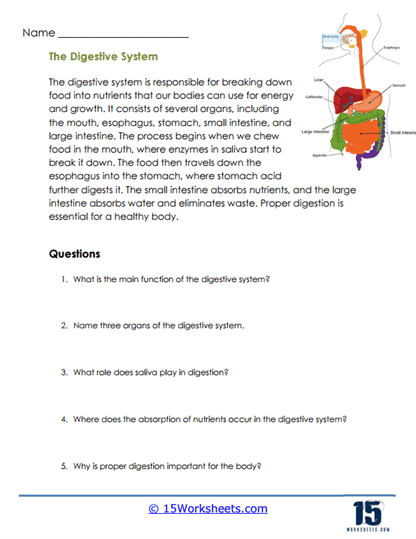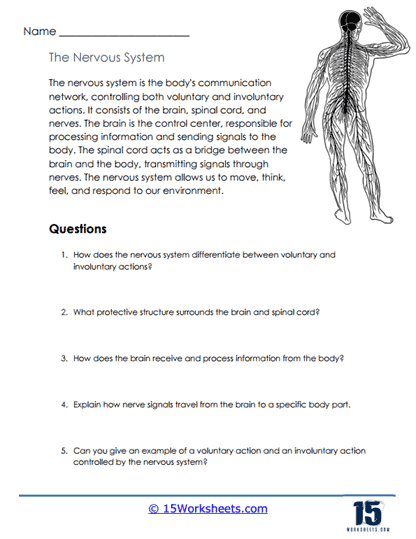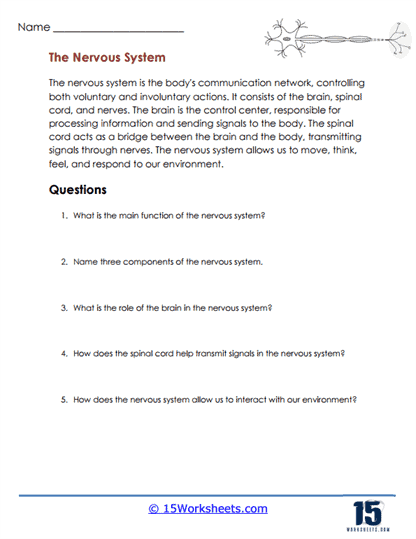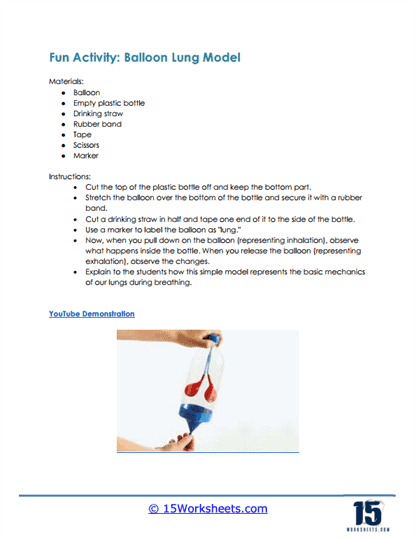Human Body Systems Worksheets
About These 15 Worksheets
These worksheets were developed to help students that have an interest in learning the anatomy and physiology of the human body. The goal is to help you better understand the complex interplay of systems that keep us alive and functioning. These worksheets are invaluable in the classroom setting, especially in biology or human anatomy courses. They provide visual aids, detailed information, and exercises to reinforce knowledge about the various body systems.
Each human body system serves specific functions, and they all work together to maintain homeostasis – a stable internal environment – regardless of external conditions. Therefore, these worksheets are generally organized around specific systems or subtopics.
What Are The Human Body Systems?
Integumentary System
Skin – Understand the layers of the skin (epidermis, dermis, and subcutaneous) and their functions, such as protection, temperature regulation, and sensation.
Hair and Nails – Explore their roles in protection, sensation, and regulation of body temperature.
Glands – Dive into the sweat and oil glands, their location, and purpose.
Skeletal System
Bones – Understand the different types of bones (long, short, flat, and irregular) and their roles.
Joints – Learn about the various joints (pivot, ball and socket, hinge, etc.) and their movements.
Cartilage and Ligaments – Study their roles in connecting bones and providing cushioning.
Muscular System
Types of Muscles – Understand the difference between smooth, cardiac, and skeletal muscles.
Muscle Movement – Explore how muscles contract and relax to produce movement.
Major Muscle Groups – Identify and locate major muscle groups in the human body.
Nervous System
Brain – Dive into the major parts (cerebrum, cerebellum, and brainstem) and their functions.
Spinal Cord – Understand its role in relaying messages between the brain and body.
Nerves – Learn about the difference between sensory and motor nerves.
Endocrine System
Glands – Identify major endocrine glands like the thyroid, pituitary, and adrenal glands.
Hormones – Explore the different hormones these glands produce and their roles in body regulation.
Cardiovascular System
Heart – Understand its structure and how it pumps blood throughout the body.
Blood Vessels – Learn about arteries, veins, and capillaries and their roles in blood circulation.
Blood – Dive into its components (red blood cells, white blood cells, platelets, and plasma) and their functions.
Respiratory System
Lungs – Understand the process of gas exchange.
Air Passages – Learn about the trachea, bronchi, and alveoli.
Breathing Mechanism – Explore how the diaphragm and rib cage facilitate breathing.
Digestive System
Organs – Identify and learn the roles of major organs like the stomach, liver, intestines, and pancreas.
Digestion Process – Understand the journey of food, from ingestion to waste elimination.
Urinary System
Kidneys – Learn how they filter waste from the blood.
Bladder – Understand its role in storing urine.
Ureters and Urethra – Study how they facilitate the transport and elimination of urine.
Reproductive System
Male System – Identify and understand the roles of organs like the testes, prostate gland, and vas deferens.
Female System – Learn about the ovaries, fallopian tubes, uterus, and more.
Reproduction Process – Understand fertilization, gestation, and childbirth.
Lymphatic System
Lymph Nodes and Vessels – Learn about their role in filtering and transporting lymph.
Immunity – Understand how the lymphatic system plays a role in defending the body against diseases.
Sensory Systems
Eyes and Vision – Understand the anatomy of the eye and the process of seeing.
Ears and Hearing – Learn about the different parts of the ear and how we hear.
Taste and Smell – Explore the sensory organs responsible for these senses and their mechanisms.

